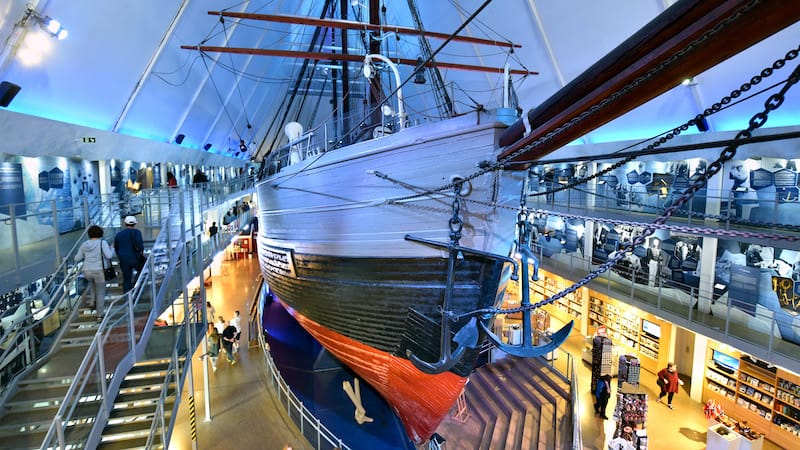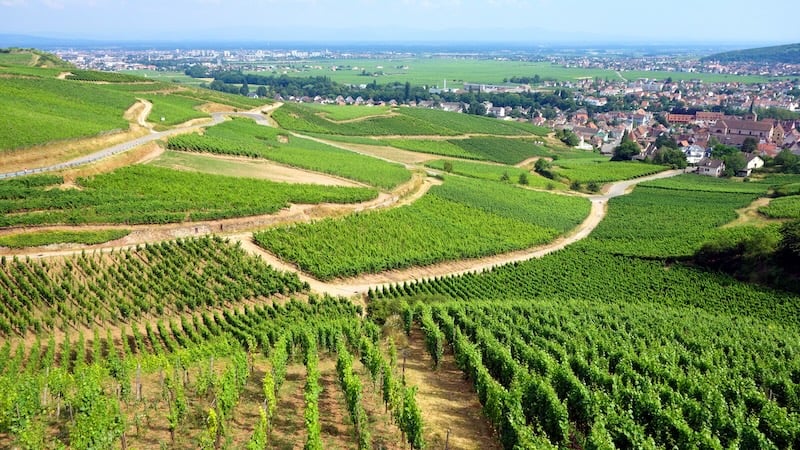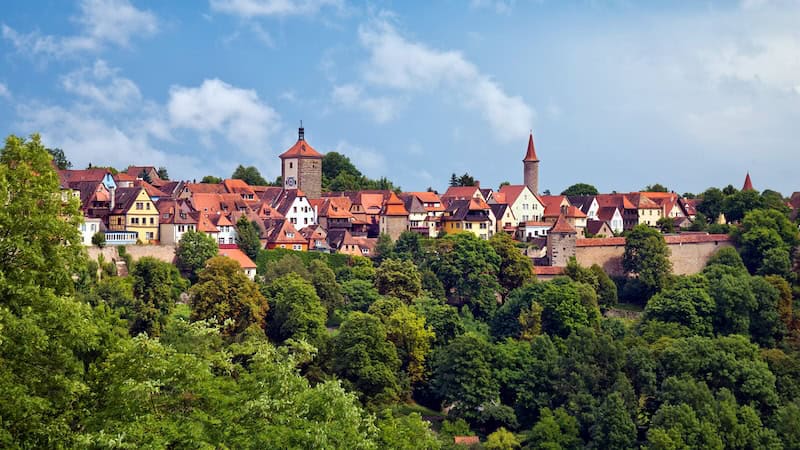Visit Oslo for the Viking Spirit
Seafaring museums on the Bygdøy peninsula

From the Viking spirit through other seafaring ventures, museums on Bygdøy in Oslo, Norway, show off Norwegian adventure and accomplishments. Travel writer Rick Steves takes us there.
While I’ve enjoyed a lot of adventurous travel, nothing in my journals would rival the adventure my grandparents had as they sailed away from their Norwegian homeland – poor and without even a phrasebook to deal with the language barrier – to homestead in Alberta. And every time I return to Norway, I recall the Viking spirit that egged them on and – I like to think – keeps me running out of pages to stamp in my passport.
Anyone with Viking ancestry (or victim-of-Viking ancestry) can enjoy a shiver of adrenaline sailing across the Oslofjord to Bygdøy where the seafaring heritage of Norway is proudly on display. This exciting cluster of sights is on a park-like peninsula that’s reached, appropriately, by ferry from downtown Oslo. The Bygdøy sights, all within a 15-minute walk of each other and the ferry landing, provide the best day out for anyone visiting Norway’s capital city.
Spark your own Viking spirit
Viking Ship Museum (re-opening 2026)
Until recently, visitors to Bygdøy could get so close to three ninth-century Viking ships you’d swear you could hear the shouts of red-headed raiders on the rampage. But today, the nearly 100-year-old Viking Ship Museum is closed for a much-needed renovation, and will reopen as the Museum of the Viking Age in 2026. The state-of-the-art facility will be three times larger and designed to better preserve the precious, time-stained vessels and thousands of artifacts dating back to when many Europeans closed their prayers with “and deliver us from the Vikings, Amen.”
Fram Museum
Long after those Vikings were Christianized and the last great warrior king was buried with his ship, the people of Norway inspired the world with their passion for exploration. The great Norwegian ship, the Fram, took modern-day Vikings Roald Amundsen and Fridtjof Nansen deep into the Arctic and Antarctic, farther north and south than any ship before. Its home, the Fram Museum, is fascinating. After browsing the displays, you’re welcome to go aboard and explore the boat. Imagine that you’ve just stowed away – pumped for a salty adventure – and ended up with the rest of the Fram crew spending three years in an Arctic ice drift. Afterward, head into the adjacent building to see Amundsen’s Gjøa, the first ship to sail through the Northwest Passage.
Heyerdahl’s Viking spirit
Then, just a harpoon toss away, you can visit the Kon-Tiki and the Ra II. These are the boats anthropologist Thor Heyerdahl built without using any modern technology and sailed, 4,000 and 3,000 miles respectively, to prove that early South Americans could have reached Polynesia by sea and that Africans could have populated Barbados. He made enough money from his adventures to also prove that rich Norwegians can stay that way by moving to low-tax Monaco.
Norwegian Maritime Museum
The adjacent Norwegian Maritime Museum provides an overview of Norway’s maritime heritage. If you like the sea, this place is a saltlick. Even landlubbers will enjoy a pair of films about Viking ships being shown in connection with the “Viking-Age Boat Builder” exhibit, which features one of the vessels from the currently closed Viking Ship Museum. In the Boat Hall, a collection of traditional boats, fishing gear, and household goods evoke the challenges of life in 19th-century coastal Norway.
Norwegian Folk Museum
And just up the street, the Norwegian Folk Museum offers a look – with more than 150 buildings brought from all corners of Norway and reassembled on 35 acres – at how those who stayed home managed to live. While Stockholm’s Skansen open-air museum claims to be the first of its kind (and was the first open to the public), Oslo’s is actually a bit older, starting out in 1881 as the king’s private collection. You’ll find craftspeople doing their traditional things; folk-dancing performances; security guards disguised in colorful, traditional costumes; creative ways to make do in a primitive log-cabin-with-goats-on-the-sod-roof age; and exhibits filled with toys and fine folk costumes. The towering 12th-century wooden stave church is one of the two dozen or so that survives in Norway. Designed by architects whose experience was mostly in boat building, these evocative reminders that Norway has been Christianized for about a thousand years look curiously like upside-down ships.
The museum hops in the summer but is dead in the off-season when the buildings are closed – though the grounds are still a pleasant place to stroll. The free English guided walks help bring otherwise empty barns, homes, and schoolhouses to life. Or, you can glean information from the museum guidebook and the informative attendants dressed in period garb.
Our trips to the “old land” may not stack up to our ancestors’ journeys to the “new land.” But if we travel thoughtfully, we can connect with our heritage, get a better sense of why we are who we are, and be thankful those crazy Vikings finally settled down.
PHOTO CAPTION, ABOVE: Visitors to Oslo’s Fram Museum can explore the Fram, the vessel that took Norwegian explorer Roald Amundsen to Antarctica, where in 1911 he and his team were the first people to reach the South Pole. CREDIT: Rick Steves.
Rick Steves (www.ricksteves.com) writes European guidebooks, hosts travel shows on public TV and radio, and organizes European tours. This column revisits some of Rick’s favorite places over the past two decades. Read more European adventures in his book, For the Love of Europe. Other books include numerous destination-specific travel guides and Travel As a Political Act. You can email Rick at rick@ricksteves.com and follow his blog on Facebook.
Explore more of Rick Steves’ Europe in Boomer
©2024 RICK STEVES
As an Amazon Associate, Boomer Magazine earns from qualifying purchases of linked books and other products.



